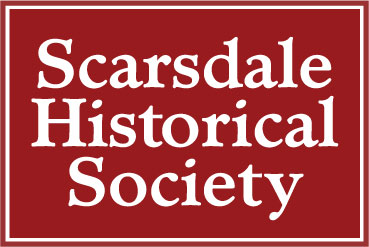Scarsdale Suffragists Documentary Premieres at Scarsdale Public Library with Two "Sold Out" Screenings
/Women Rising: The Scarsdale Suffragists premiered December 16th with two fully reserved screenings at Scarsdale Public Library. The film tells the little-known story of the courageous women behind the suffrage movement in Scarsdale and how their work shaped the community. We also unveiled two new photo exhibits that evening in partnership with the library’s Local History Librarian, Daniel Glauber.
The film was introduced by President Randy Guggenheimer, who shared some insights about making the film. There were countless mentions of Scarsdale’s suffrage meetings, rallies and dances in newspapers, yet there were no photographs of the women in the library’s photo archives. In search of photographs and firsthand stories about these women, relatives were tracked down all over the country. Guggenheimer stated, “With this new film and exhibits, we give these trailblazers proper recognition and individual identities. When you leave the library tonight, you’ll remember the names of Florence, Josephine, Bella and Edna.”
Women Rising features trailblazers like Florence Bethell who lectured, wrote, marched and lobbied for womens’ right to vote - at a village, state and national level. In the face of apathetic and sometimes hostile attitudes toward women’s suffrage, the women used creative approaches to educate Scarsdale women on suffrage - from porch parties to suffrage dances.
The screening was followed by a Q&A panel with film participants.
Front (left to right): Nancy Horrigan, Archivist for the Scarsdale Woman’s Club, Lesley Topping, Filmmaker, Barbara Davis, Director of the Westchester County Historical Society. Back, left to right: Linda Leavitt, former Editor-in-Chief of the Scarsdale Inquirer, Daniel Glauber, Scarsdale Public Library Local History Librarian, Leslie Chang Trustee and Associate Scarsdale Village Historian Historian.
In closing, Guggenheimer emphasized that this suffrage movement was a milestone in a longer fight. “The spirit, bravery and resilience of the Scarsdale Suffragists is an inspiration, but we must remember that their crusade was just one pivotal step in the continued battle for equal women’s rights and suffrage.”
After the screening event, attendees visited the Local History Center to see the new suffrage exhibits. For only that night, there were some museum-quality suffrage artifacts on display, thanks to our trustee and collection-builder, Seth Kaller. The exhibits are on display at the Scarsdale Public Library through January.
The film is now available online! Click here.
The entire collection of our films can be viewed here.














